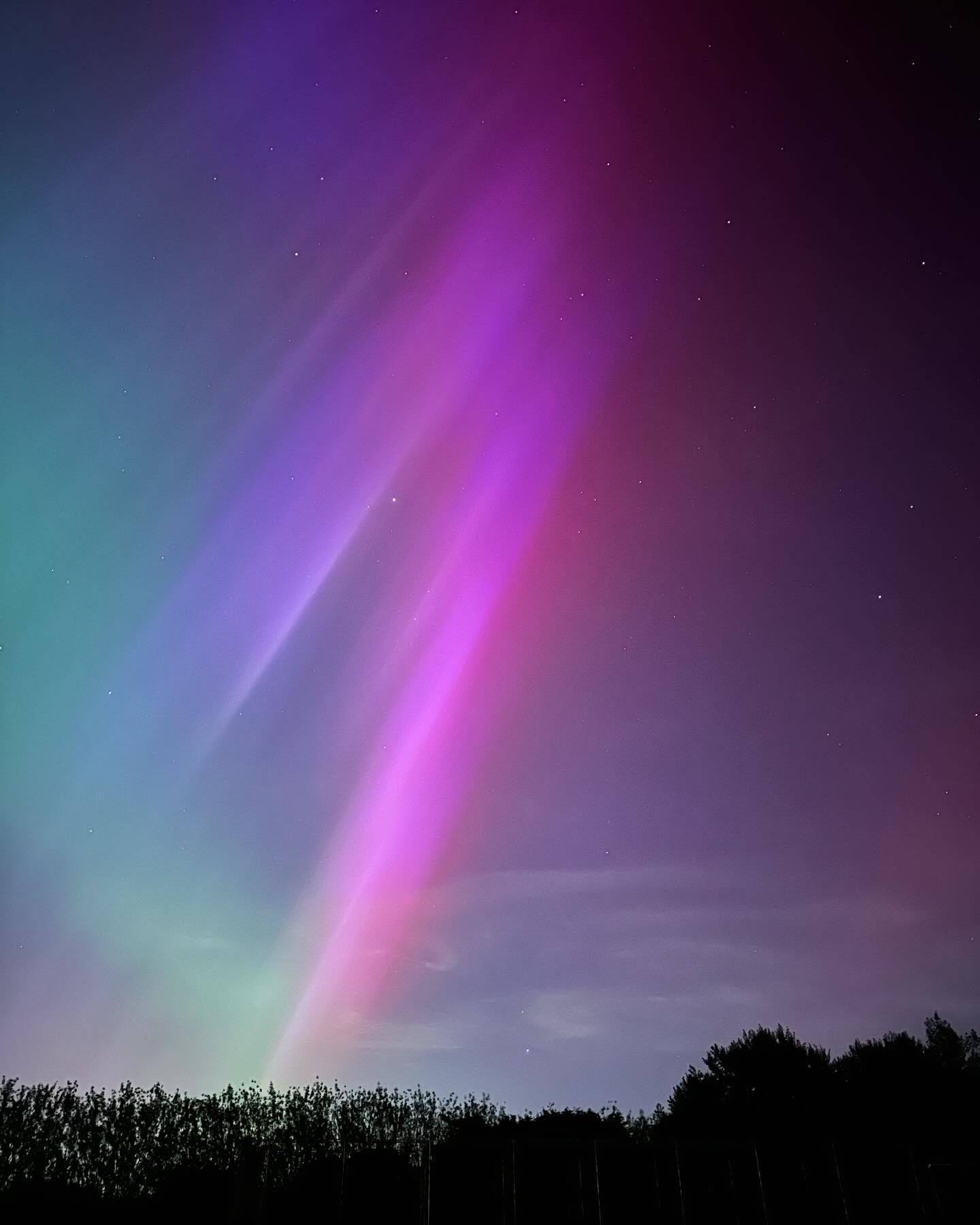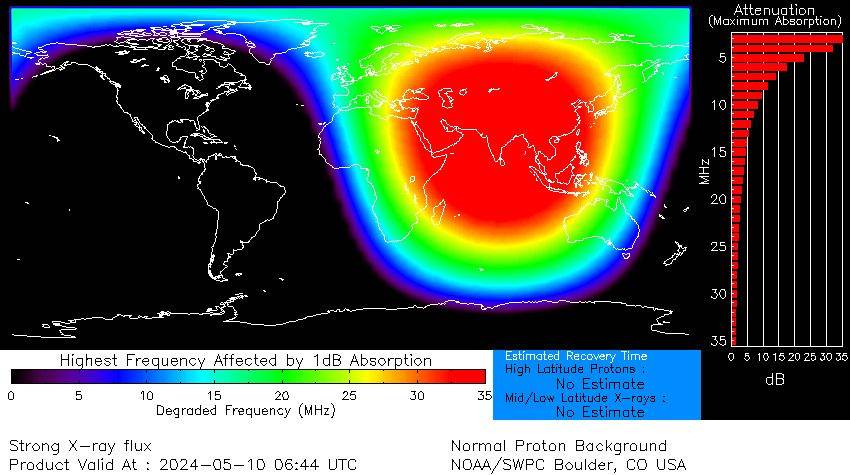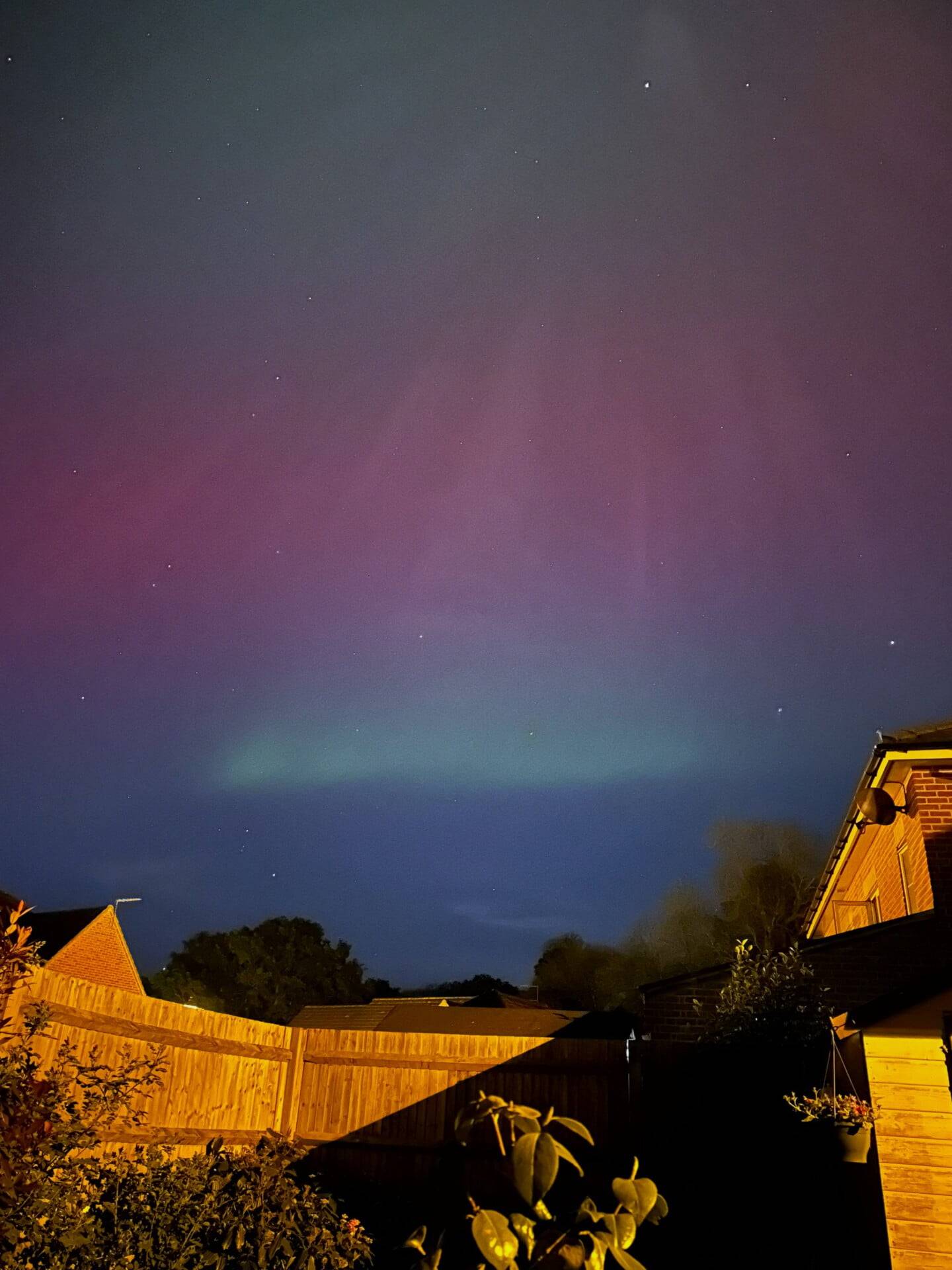Reading Time: mins
Seeing the Aurora Borealis or Northern lights is a dream for many people. One which a few lucky ones from the UK get the experience by traveling to northern countries such as Iceland or Norway, which are nearer the north pole and so have more stronger aurora activity visible.
However, seeing Aurora as far south as the UK, particularly Southern England where I live is very rare. I certainly don’t remember anything in my lifetime like the aurora which was seen on Friday the 10th May from all over the UK. People all over the UK were excitedly watching and taking fantastic photos which they have been sharing all over social media.

Aurora are caused by charged particles from our sun spiralling down the Earth’s magnetic field lines and interacting with atoms and molecules in our atmosphere. The different colours are the result of different elements such as oxygen (green) and nitrogen (purple, blue and pink).
The Sun is emitting charged particles all the time. However, the Sun is variable, like many stars we see in the night sky. The Sun’s activity has an 11 year solar cycle and at present we are approaching the maximum of activity. This means the Sun has more activity, such as dark sunspots which in turn causes more charged particles. These sunspots can become huge, larger than our planet. Sunspots are like massive volcanoes, letting off huge plumes of charged particles in coronal mass ejections (CMEs). Sunspots ten times the size of the Earth had appeared on the Sun, which started firing powerful solar flares. When the flares were facing the Earth, space weather scientists became very excited.
Behemoth sunspot AR3664 unleashes its biggest solar flare yet, facing towards the Earth. This was classified as a X3.98 flare, which peaked in the early hours of morning of the 10th May 2024. The X-class classifies the most intense solar flares, and the number gives further information of the strength. NASA has observed 82 intense flares between 3rd and 9th May 2024.
This solar flare caused a rare geomagnetic storm, the highest level of classification G5. The last time an extreme geomagnetic storm hit the UK was 2003. This geomagnetic storm caused widespread either temporary or complete loss of high frequency (HF) radio signals across Asia, eastern Europe and eastern Africa. These shortwave radio blackouts are common after powerful solar storms as they cause strong pulses of X-rays and extreme UV radiation. It is worth mentioning that, nowadays we are better able to predict solar storms and smartphones enable aurora watches to spot even faint auroras.

All across the UK the aurorae were visible. Down here in the south of England it was a very faint pink glow which from a dark sight you could just see with the naked eye looking northward. However, when a camera or smartphone was pointed at it in night mode and taking long exposures then the real beauty and excitement of the Aurora could be witnessed.

Friday 10th May saw the strongest Aurora across the UK for over 20 years. Lots of avid aurora hunters and people new to the excitement of trying to catch a glimpse of the northern lights headed outside to try to see an exciting phenomenon. They weren’t disappointed. Faint auroras were seen even by eye as far south as Southern England and fantastic photos were taken all across the UK. These are rare events but as we approach the solar maximum of the 11 year cycle we can hope they will occur again soon.
This post was written by Dr Heather Campbell for Mission Astro.
If you have any questions about this post or our services, please email us on [email protected].
Take me to the FREE taster session for Mission Astro!
Copyright © 2025 Just Good Science Ltd
Website and course built and managed by Web X Design Studio